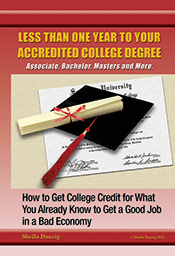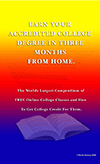According to the National Student Clearinghouse Research Center, of a sample of 4.5 million students returning to college in 2005-2008 after having taken some school and dropped out, only one third of these students ended up actually completing their degree. Why is this?
The decision to go back to school to complete a Bachelor’s or Associate’s degree is a tough choice many adults in the United States face. Once students take the plunge and go back to school, they face even more challenges unperceived by their peers, and unaddressed by many college campuses across the country. Below are three major challenges college and universities need to address to support returning students in their graduation goals.
- Feelings of Alienation from Academic Peers
Students returning to school after months, years, or even decades of being out of school report feelings of alienation from their classmates. This is because their life experiences are different, the realities of their day-to-day lives and responsibilities are different, and because there is a sense of having lost time in comparison to peers. Another reason returning students feel alienated is because most colleges and universities are structured around residential students. The scheduling needs of nontraditional students – the type of student returning students tend to be – are not easily addressed in normal college life and require special accommodations on the part of the administration, the teachers, and the student. Having to ask for special treatment because one’s own life is vastly different from their fellow students is alienating. The added stress of this reality of returning to school compounds and begins to effect different facets of students’ lives and academics, contributing to high dropout rates.
- Existing Credits Don’t Count
When transferring schools or returning to school having taken several classes at other institutions of higher education, students are finding that not all of their credits earned elsewhere will transfer over. That means while these credits do exist, they cannot accumulate and count towards their degree. For this reason, returning students find themselves retaking classes they have already taken. This is a waste of time and money, and students become bored and frustrated both with the academic content and with the situation in general. Bored, frustrated students who feel their time and money is being wasted – and rightly so – are far more likely to just drop out and do something else.
- Trouble Engaging Fully in Education
The previous two reasons dropout rates are high among students returning to college contribute to these students not being able to fully engage in their education. Another big contributing factor as to why returning students have trouble engaging in their education is because nontraditional often must enroll part-time to make space for work and family obligations. Between work, school, and family, students cannot engage fully because they are simply stretched too thin. Nontraditional students have trouble fully engaging while in school, and tend to feel overwhelmed by all of the responsibilities and time commitments inherent to going back to school.
These three challenges can and often are overcome by students returning to college or university after having taken time away. The solution is increased direct teach and advisor involvement with these students. When students doubt their ability to succeed in school, academic performance tends to follow. However, when encouraged and supported by teachers, advisors, and administrators, returning students can overcome these challenges and more, and go on to earn their degrees.
If you have existing credits that do not transfer or cannot be counted towards your degree, visit us online at thecareerpeople.com to get credit you can use for the work you have done.
Tags: college student dropout rate, non-traditional students, reenrollment, returning students, transfer credits



